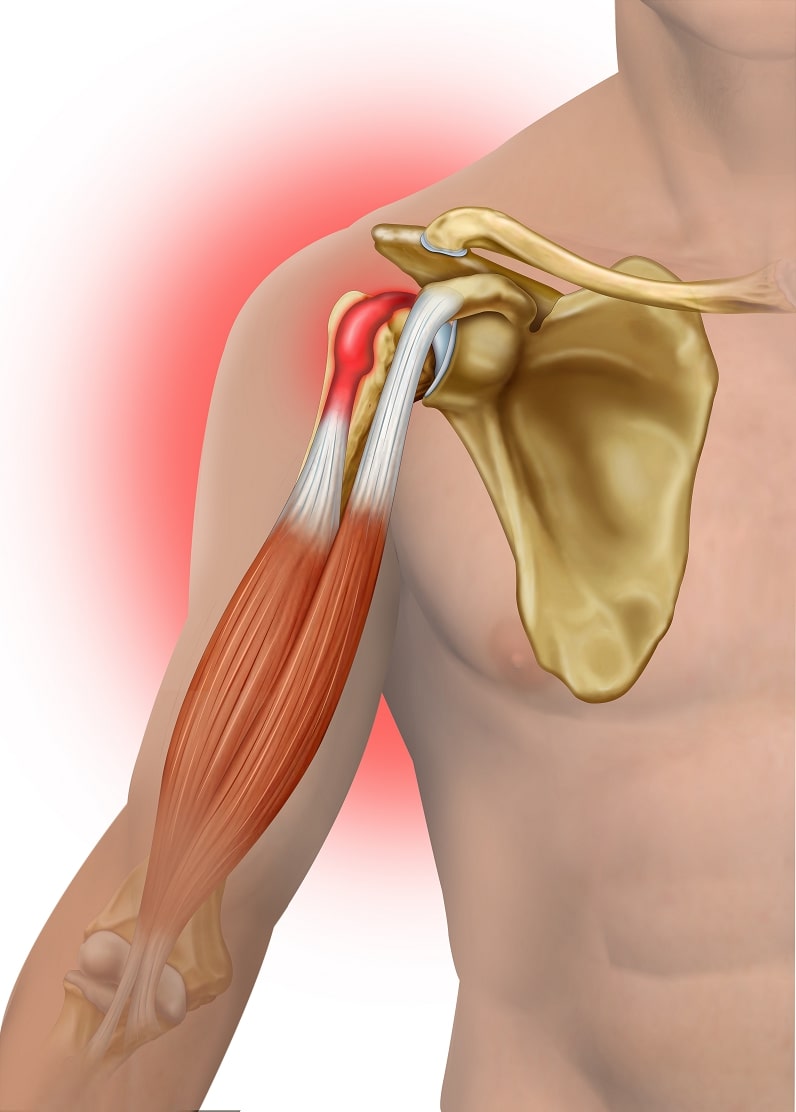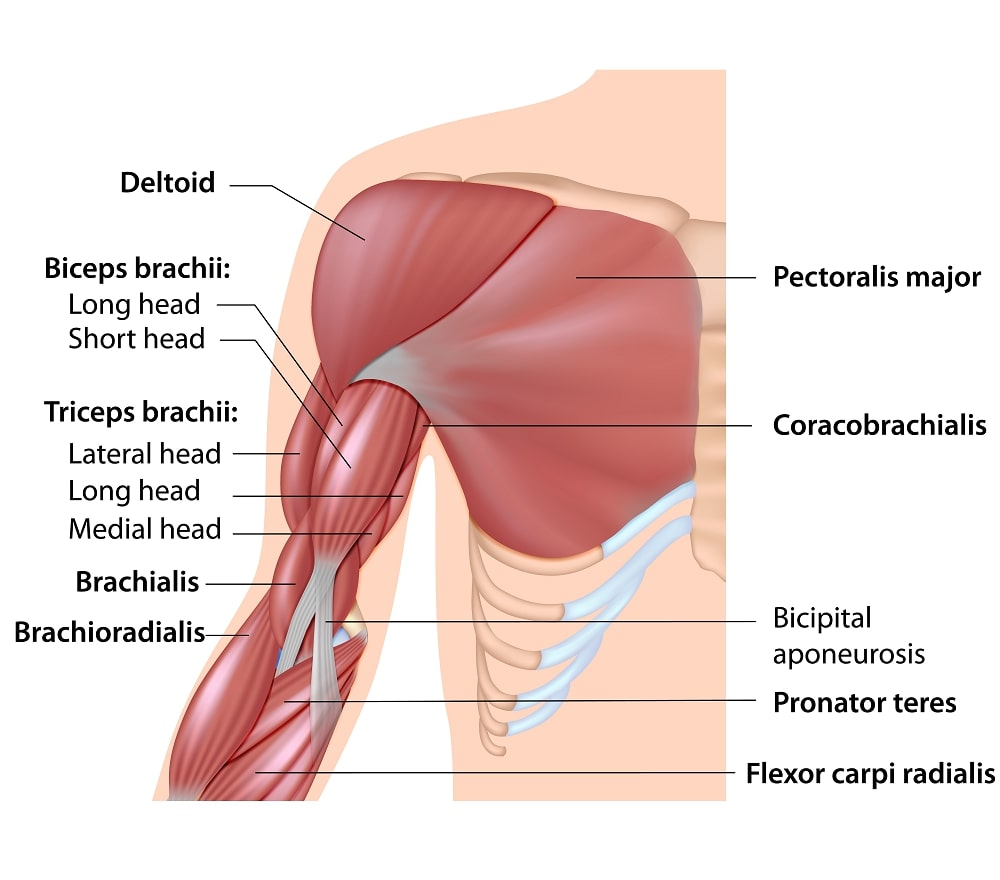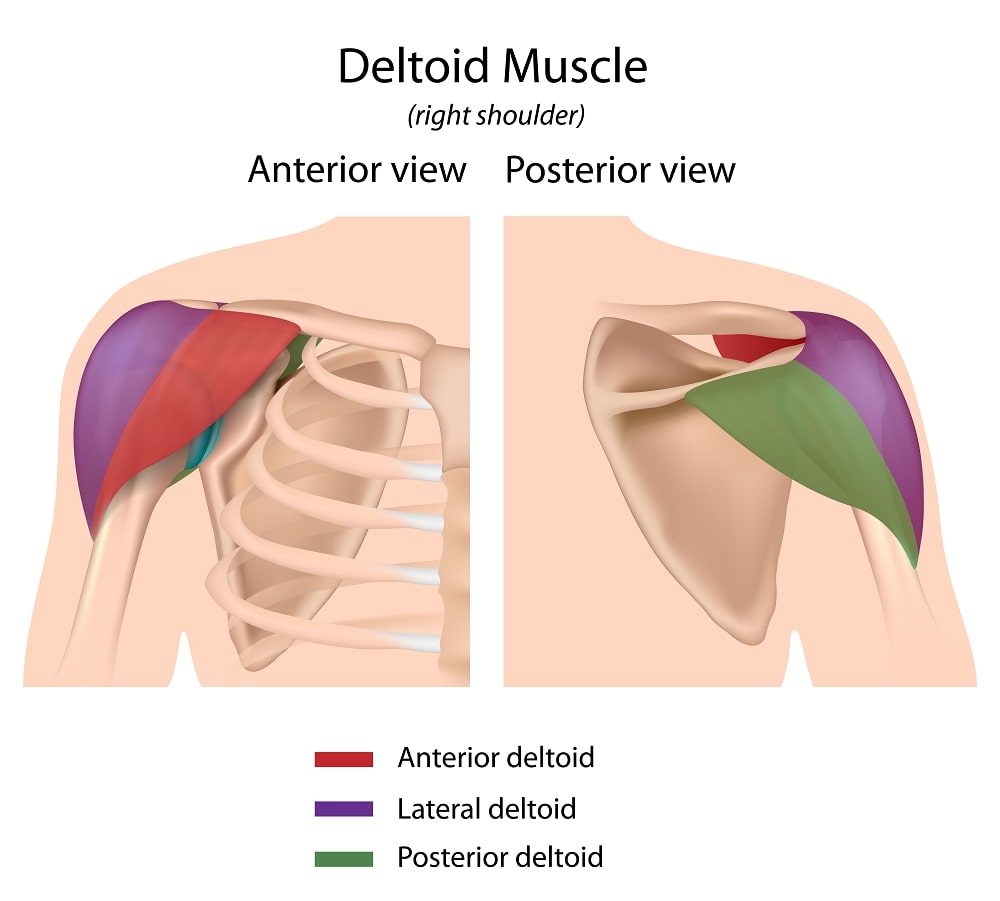The deep muscles and tendonds are the four rotator cuff muscles and the long head of biceps muscle and tendon. The subscapularis rotates the humerus internally, the supraspinatus initiates abduction and stabilizes the glenohumeral joint, the infraspinatus rotates the humerus externally and the teres minor also rotates externally but has an important stabilizing function when the arm is abducted and internally rotated.
The biceps muscle has two heads: short and long. The long head travels from along the anterior part of the humerus into the groove between the tuberosities and inserts on top of the glenoid socket.

The superficial muscles are the pectoralis major, trapezius, latissimus dorsi and deltoid muscle. The pectoralis originates from the chestwall and clavicle and inserts into the humerus. This muscle flexes, internally rotate and adduct the humerus.
 The trapezius muscle originates form the vertebra of the spine and the back of the head and inserts onto the clavicle, acromion and scapula spine. It elevates the shoulder but also helps with rotation of the scapula. The latissimus dorsi muscle originates from the vertebras, pelvis and ribs and inserts into the lower end of the intertubercular groove – the space between the greater and lesser tuberosities. It helps to extend the upper arm but also internally rotates and adducts the humerus.
The trapezius muscle originates form the vertebra of the spine and the back of the head and inserts onto the clavicle, acromion and scapula spine. It elevates the shoulder but also helps with rotation of the scapula. The latissimus dorsi muscle originates from the vertebras, pelvis and ribs and inserts into the lower end of the intertubercular groove – the space between the greater and lesser tuberosities. It helps to extend the upper arm but also internally rotates and adducts the humerus.
Finally shapes contour of the shoulder and is the strongest superficial muscle. It can be divided into three parts. The anterior part originates from the anterior border of the clavicle; the middle part from the acromion and the posterior part from the scapula spine. The anterior part flexes and internally rotates the humerus, the middle part abducts and the posterior part externally rotates and extends the humerus. Once the arm is off the side of the body the combined deltoid muscle abducts the arm 
